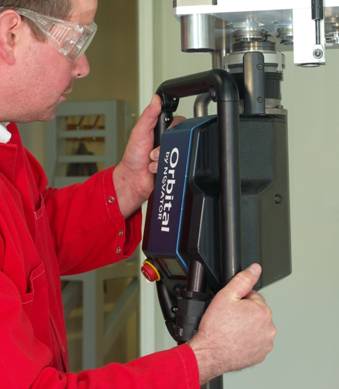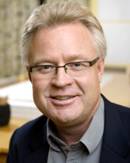KTH Spin-off Wins Boeing Order
NEWS
The Swedish engineering company Novator AB, a spin-off from KTH’s Department of Aeronautical and Vehicle Engineering, has landed a major order from the giant American aircraft manufacturer Boeing.

“This is exciting news. It’s been 10 years since I first contacted Boeing,” says Associate Professor Ingvar Eriksson, founder of Novator AB and innovation manager at KIC InnoEnergy, the pan-European “Knowledge and Information Community” for sustainable energy entrepreneurship based at KTH.
In the early 2000s, KTH researcher Ingvar Eriksson took his business idea — a freshly patented drilling technology — on a road show in the United States, looking to woo American aircraft manufacturers who might be interested in the product.
Boeing liked the idea, ordering a prototype machine and embarking on a decade of joint product development with the new company.
Assembling an aircraft involves drilling countless holes for the rivets that hold sections together, and now the industry is facing a major transition from aluminum to advanced composite materials and titanium, putting new demands on drilling technology.
“Once our advanced drill is fixed manually on a template, drilling takes place automatically through an optimized process that allows detailed control of factors such as feed rate and speed,” Eriksson explains.
The industrial specifications for new aircraft assembly drilling technology are extremely rigorous, beginning with extensive and time-consuming structural fatigue testing. The drilling tool itself was developed by Boeing and other suppliers, alongside Novators development of the machinery.

“Our interaction with the customer has been an important success factor,” Eriksson says. “From the beginning, we’ve been able to work with a clear set of product requirements covering everything from functionality and application adaptation to ergonomics, service and reliability.”
But the transition from prototype to a commercially viable product can be a difficult, costly and lengthy process. “The cost to go from prototype to product can be 10 to 100 times greater than the cost of developing the prototype, depending on customer requirements,” says Eriksson.
Novator’s drill will be used in manufacturing the new Boeing 787 aircraft. Eriksson declined to name the amount of the new order, but says it is “significant” and will give the company a solid financial foundation for the next few years.
What tips can you give other researchers who see market potential in a new innovation?
“The first thing to consider is whether you want to start a company or not. If you believe that’s the best path to commercialisation, the next question becomes whether you want to run it yourself or find a partner. Starting and running a business is nothing like conducting research. You have to be driven to translate ideas into commercial products.
“If you want to be an entrepreneur, I suggest you get out and meet prospective clients directly. The hardest part is finding the right people at large companies, but I was lucky enough to get tips on business contacts in the U.S. from a friend in Stockholm.
“Customer requirements and customer financing are extremely valuable in the development of a business. But the customer will only pay development costs when the economic benefit of the product is clearly identified.
“Patent protection can be important to consider at an early stage of its development.”
For more information: Ingvar Eriksson +46-8-790 66 29, or ingvare@kth.se.
Katarina Ahlfort

